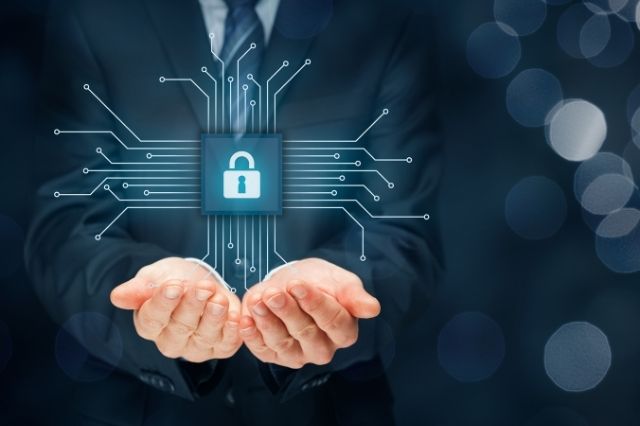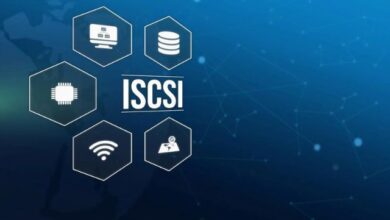10 Best Ways to Improve Your Cybersecurity

Every month, there are cybersecurity breaches in the headlines. Some things are unavoidable, but many can be prevented by following a few simple guidelines. According to a research, scammers are utilizing registered brokers’ identities and personal information to put up ‘imposter websites’ that seem like the representatives’ personal websites, and they are also calling and sending potential consumers to these sites. These sites are most likely being used by scammers to collect personal information in order to commit financial fraud.
Cybersecurity is sometimes compromised when IT installations exposed to extra hazards in the process of reaching to a far-flung workforce. To help protect data, many companies have installed increased security throughout their networks. Even if you take extra precautions, there are several basic things you can do to assist protecting your IT environment. Here are some of them.
Implement Password Rules
One of the first lines of protection against breaches is strong passwords, and changing them on a regular basis can help keep hackers out. Even if prompted, most employees will not update their passwords voluntarily. Make it a requirement for users to update their passwords on a regular basis, and teach them how to establish and remember strong passwords.
Update Your Software Regularly
Any Internet connection is susceptible, and this is a key aspect that hackers strive to exploit. Patches and enhancements should be applied to every connection, operating system, and application. Implementing software and system security updates as soon as possible reduces the risk of being exposed to vulnerabilities.
Enforce VPNs For All Connections
Networks that rely solely on generic security mechanisms are more vulnerable to intrusion. Implement Virtual Private Network (VPN) connections between office sites and make their use simple—and mandatory—for mobile employees who utilize public Wi-Fi.
Retrieve All Unused Services
Decommission any applications, logins, or user credentials linked with limited-duration items once they’ve expired. Turn off any UC features you aren’t using, such as the video chat option, to further prevent illegal access to your company. Some programmes have their own security mechanisms built in. While additional precautions are still necessary, vendors are familiar with their own products and often invest significant resources to provide a secure environment for their clients. Find out what security features are built into your software and make the most of them, in addition to any other security precautions you have in place.
Establish Clear Protocols with Clients & Suppliers
In order to communicate and share information with new clients and suppliers, insist on using named individuals or code phrases for big changes in terms, payments, and so on. To avoid physical threats, make sure you do your homework and vetting before providing anyone access to your premises.
Beware of Impersonation
If your identity and role are known to the public, you are more likely to be impersonated. If you are in a senior position or have the authority to initiate payments, establish ground rules with your coworkers, such as making direct personal contact by phone, using code phrases, and so on. On large payments, implement dual authorization. To prevent CEO fraud, insist on PO numbers for all significant payments.
Create a ‘Challenge Culture’ for Unfamiliar Faces
Encourage all employees to carry a security permit or ID with them at all times so that others can see who is authorized and who isn’t. Sure, it’s humiliating, and you might be hesitant to do it because of the bystander effect, but it’s necessary to protect the firm. Take extra caution while entering access codes to a door or building in public locations, and don’t assume that someone stepping in with a colleague is with them.
Only Use Approved Connections & Devices
This has become a greater menace than ever before; thanks to the advent of hybrid-working. Many businesses have turned to virtual work-from-home operations as the Coronavirus outbreak shows no signs of alleviation. Remote working’s fast growth has led to enormous cybersecurity vulnerabilities and growth in security incidents. Employees are increasingly more likely to work from home or on the go. They may be tempted to utilize their own devices or connect to insecure networks at home. So they may be advised to use only approved connections and devices to avoid cyberattack and ensure cybersecurity of the company.
Conduct Regular Penetration Testing
One of the most proactive measures a company can take is regularly conducting penetration or pen testing. This involves simulating cyberattacks on your systems to discover vulnerabilities before malicious hackers can exploit them. Using professional services like GuidePoint penetration testing services, businesses can identify and address potential weaknesses in their cybersecurity framework, ensuring that their defenses are always ahead of evolving cyber threats.
Use Multi-Factor Authentication
Your employees and their data will be substantially safer from potential threats if you use authentication factors like two-factor authentication (2FA) and multi-factor authentication (MFA). It makes it more difficult for attackers to get around this additional security layer by giving a more secure authentication technique. It indicates that at least one more form of personal verification is required to access software or conduct a transaction. It might be as simple as typing a memorable word or entering a passcode received via text message or a dedicated App.
Arrange a Phishing Training Course
Employees will gain knowledge on online safety as well as measurements on how their internet behavior has changed and improved as a result of this. These types of training should be done on a regular basis to keep everyone up to date on current data infringement practices and to secure your intellectual property and company data.
Conclusion
As cybersecurity threats evolve, each company’s cybersecurity defense measures must evolve as well. Periodic assessments of staff readiness are required to identify areas of vulnerability and determine whether existing policies and training need to be updated. Documenting the results of all assessments and ensuring that staff follow through on any risk mitigation advice is best practice to encourage compliance.
Everyone is responsible for cybersecurity, but even the most resilient companies require strong leadership. If a company’s CEO takes cybersecurity seriously, it will pervade the entire organization and contribute to the development of a cybersecurity culture.
There has never been a better time for executive leadership to step up and develop a strong cybersecurity culture that encourages everyone to know what the correct actions are to take in a period of increased vulnerabilities and attacks.




